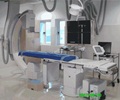Researchers have identified several factors that are linked with an increased risk for cardiac arrest and sudden cardiac death among adolescents with long-QT syndrome…
Researchers have identified several factors that are linked with an increased risk for cardiac arrest and sudden cardiac death among adolescents with long-QT syndrome (an abnormality of the electrical conducting system of the heart, characterized by a specific finding on the ECG), according to a study.
Risk factors for cardiac events such as aborted cardiac arrest (when an episode of cardiac arrest is reversed, such as with defibrillation) and sudden cardiac death in adolescents with hereditary long QT syndrome (LQTS) have not been previously investigated, according to background information in the article.Jenny B. Hobbs, M.D., of the University of Rochester Medical Center, Rochester, N.Y., and colleagues identified the association of clinical factors and therapeutic interventions with risk of aborted cardiac arrest and sudden cardiac death in 2,772 adolescents with clinically suspected LQTS. The participants were from the International Long QT Syndrome Registry who were alive at age 10 years and were followed up during adolescence until age 20. Follow-up ended in Feb. 2005. The registry enrollment began in 1979 at 5 cardiology centers in the United States and Europe.
There were 81 patients who experienced aborted cardiac arrest, 45 who had sudden cardiac death; 9 of the 81 patients who had an aborted cardiac arrest event experienced subsequent sudden cardiac death. Significant independent predictors of aborted cardiac arrest or sudden cardiac death during adolescence included recent syncope (loss of consciousness), QTc interval (a certain measurement on an electrocardiogram), and sex. Among those 10 to 12 years old, males had 4 times the risk of females of the same age, whereas there was no significant sex difference among those 13 to 20 years old.
Compared with those with no syncopal events in the last 10 years, patients with 1 syncopal episode in the last 2 years had nearly 12 times the risk for a life-threatening event; those with 2 or more syncopal episodes in the last 2 years had about 18 times the risk. Among individuals with syncope in the past 2 years, ?-blocker therapy was associated with a 64 percent reduced risk.
“In summary, we identified 3 important factors for estimating the risk of life-threatening events in adolescent patients with suspected LQTS: timing and frequency of recent syncope, the duration of the QTc interval, and sex. This clinically oriented risk-stratification approach might serve as a useful guide for prophylactic treatment decisions to reduce the risk of sudden death in patients with LQTS during the high-risk teenage years,” the authors write.
Source-Newswise
SRM











